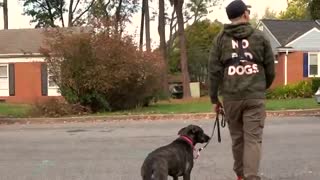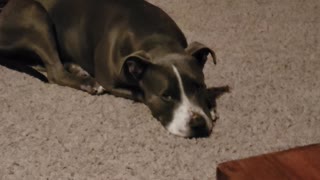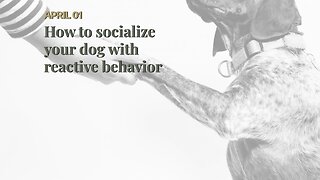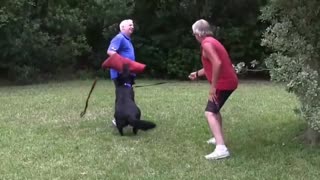My dog HATES everything! How to teach a shy, nervous and fearful dog!
Teaching a shy, nervous, and fearful dog requires patience, understanding, and positive reinforcement. Here are some steps to help you work with your dog:
Create a Safe Space: Designate a quiet, comfortable area in your home where your dog can retreat to when feeling overwhelmed. Make it cozy with their bedding, toys, and maybe some calming music.
Go Slowly: Gradually introduce your dog to new people, places, and things. Avoid overwhelming them with too many experiences at once. Slowly exposing them to new stimuli will help build their confidence over time.
Positive Reinforcement: Reward your dog for calm and relaxed behavior. Use treats, praise, and toys to reinforce positive actions. This helps your dog associate positive experiences with things that used to make them anxious.
Desensitization: Introduce your dog to their fears in a controlled manner, starting at a distance where they are comfortable and gradually decreasing the distance over time. For example, if your dog is afraid of other dogs, start by having them observe other dogs from a distance and reward calm behavior.
Counter-Conditioning: Pair the things your dog is afraid of with things they love. For example, when a stranger approaches, have the stranger toss treats to your dog without direct interaction. This helps your dog create positive associations with the feared object or situation.
Engagement and Play: Engage your dog in play and interactive activities that help build their confidence. Interactive toys and games that challenge their mind can help redirect their focus away from their fears.
Training: Teach basic commands like "sit," "stay," and "come." Training helps your dog understand what is expected of them and provides mental stimulation that can boost their confidence.
Socialization: Gradually expose your dog to other well-behaved dogs and people in controlled environments. Puppy classes or socialization groups with experienced trainers can be beneficial.
Avoid Punishment: Never punish your dog for fearful behavior, as this can worsen their anxiety. Instead, focus on positive reinforcement and rewarding brave behavior.
Consult a Professional: If your dog's fear and anxiety are severe, consider consulting a professional dog trainer or a veterinary behaviorist. They can create a customized behavior modification plan based on your dog's specific needs.
Calming Aids: There are products such as pheromone diffusers, calming vests, and supplements that can help alleviate anxiety. Consult your vet before using any of these products.
Patience: Remember that progress may be slow, and setbacks can happen. Be patient and understanding with your dog as they work through their fears.
It's important to tailor your approach to your dog's individual needs and comfort level. What works for one dog may not work for another. Building trust and a strong bond with your dog will be essential in helping them overcome their fears
-
 11:39
11:39
meyerjohn29
2 years agoHow to you can teach a shy, nervous and fearful dog!
14 -
 0:10
0:10
Losjitsu
2 years agoMy dog hates me
251 -
 0:28
0:28
HouseOfSaade
2 years agoMy dog hates me
26 -
 0:24
0:24
ingersollturok
6 years agoI think my dog hates me
11 -
 18:45
18:45
"Discover the World"##
9 months ago"Unlocking Confidence: Helping Your Shy, Nervous, and Fearful Dog Thrive"
1 -
 1:43
1:43
SmartTraining
3 years agoTeaching Your Dog To Not Fear Cars, Loud Noise, etc.(Secret In Description)
11 -
 0:11
0:11
lucamassara
1 year agoA perplexed dog
3 -
 5:03
5:03
GuillermoChaves
1 year agoHow to socialize your dog with reactive behavior
39 -
 4:10
4:10
krish07
3 years agoHow To Make Dog Become Fully Aggressive With Few Simple Tricks and Tips
22 -
 0:59
0:59
American Standard K9
1 year agoHow to Build a Dog’s Confidence
61